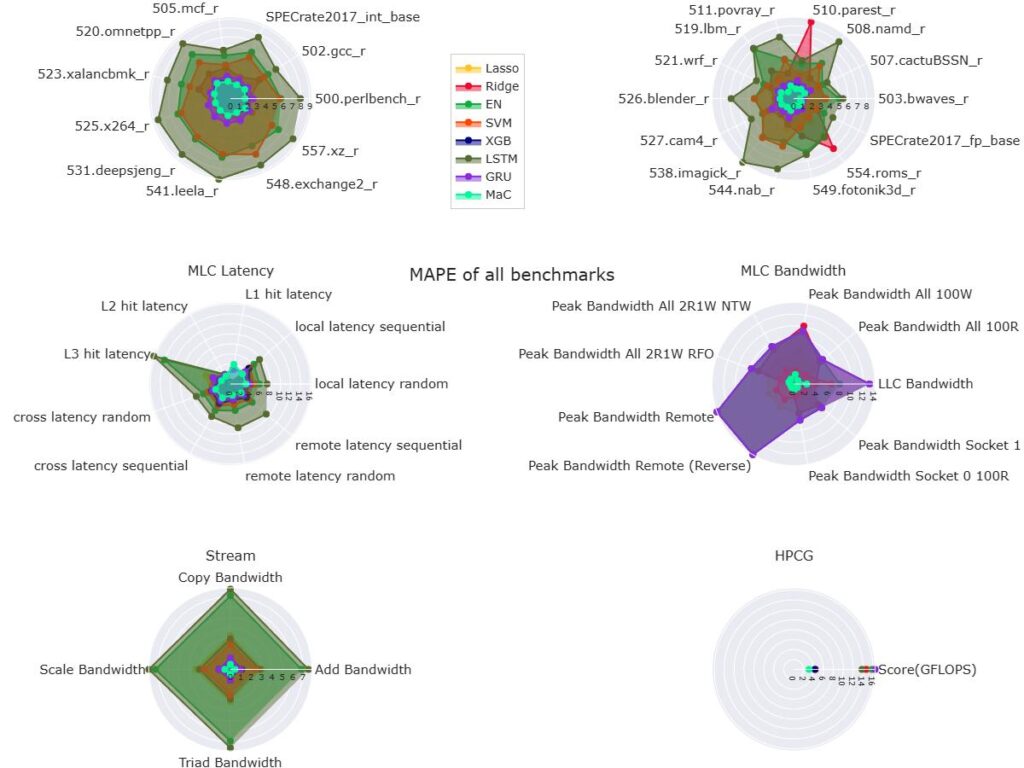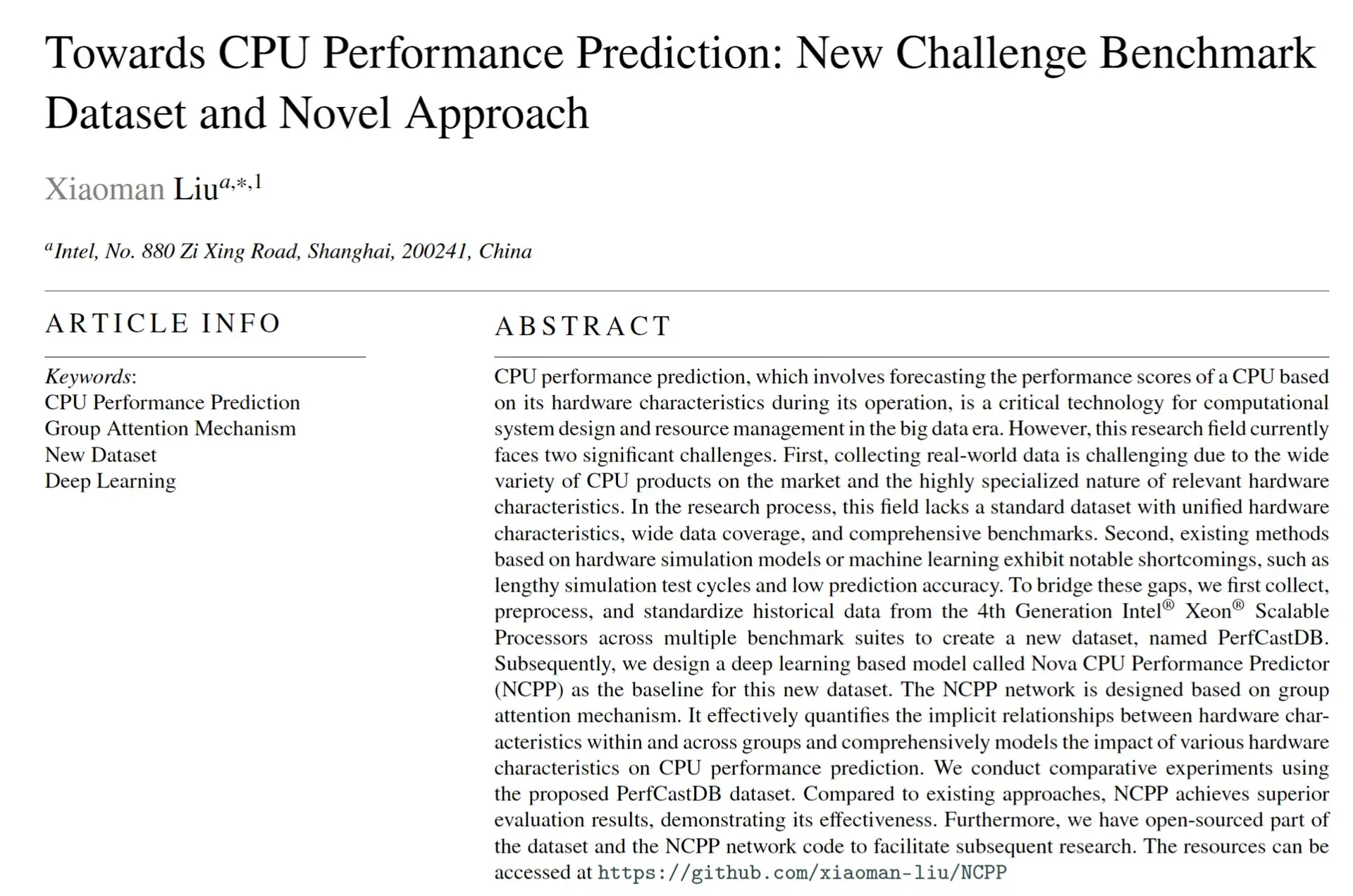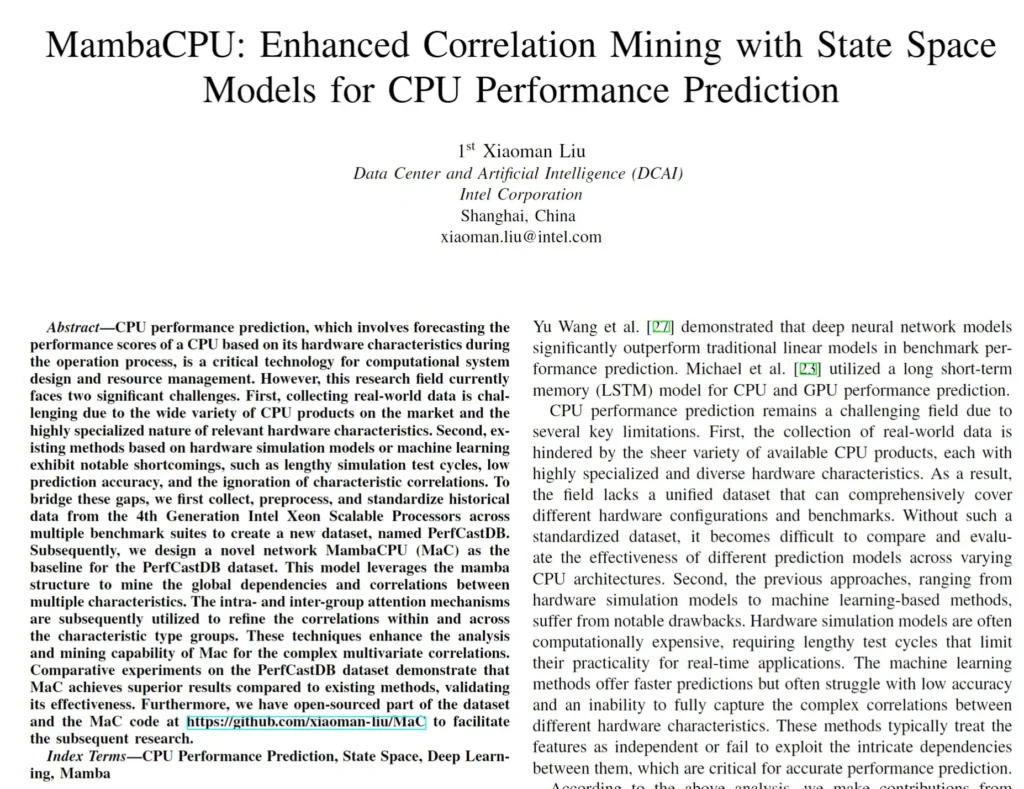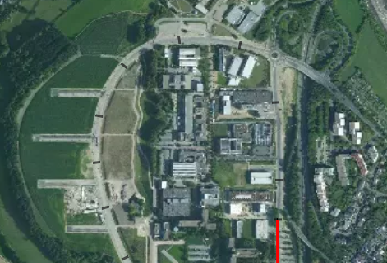MambaCPU: Enhanced Correlation Mining with State Space Models for CPU Performance Prediction
Xiaoman Liu1
1Intel, Data Center and Artificial Intelligence (DCAI)
xiaoman.liu@intel.com
Background
CPU performance prediction remains a challenging field due to several key limitations. First, the collection of real-world data is hindered by the sheer variety of available CPU products, each with highly specialized and diverse hardware characteristics. As a result,
the field lacks a unified dataset that can comprehensively cover different hardware configurations and benchmarks. Without such a standardized dataset, it becomes difficult to compare and evaluate the effectiveness of different prediction models across varying
CPU architectures. Second, the previous approaches, ranging from hardware simulation models to machine learning-based methods, suffer from notable drawbacks. Hardware simulation models are often computationally expensive, requiring lengthy test cycles that limit
their practicality for real-time applications. The machine learning methods offer faster predictions but often struggle with low accuracy and an inability to fully capture the complex correlations between different hardware characteristics. These methods typically treat the features as independent or fail to exploit the intricate dependencies between them, which are critical for accurate performance prediction
Performace comparison
Detailed Performance Evaluation: Radar Chart Comparison of MAPE for NCPP and Conventional Machine Learning Models in SPECrate2017 Integer and Floating Point Benchmarks, MLC Latency and Bandwidth, Stream, and HPCG

Contribution
- We organize a novel dataset called PerfCastDB, which suits for the CPU performance prediction task. This dataset offers comprehensive coverage of hardware characteristics and performance benchmarks, providing a solid foundation for future research in CPU performance prediction
- We propose a novel network MambaCPU(MaC) under the PerfCastDB dataset. MaC is built on the Mamba structure, which can leverage the complex dependencies and global correlations between multiple hardware characteristics. The intra- and inter-group attention mechanisms are introduced to refine the group-wise correlations. The comprehensively utilization of the character correlations ensures the prediction accuracy and interpretability of the MaC model.
- We compare the proposed MaC with several traditional approaches. The experimental results show that MaC significantly outperforms existing approaches, which evaluates the effectiveness of MaC.
BibTeX
@article{liu2024mambacpu,
title={MambaCPU: Enhanced Correlation Mining with State Space Models for CPU Performance Prediction},
author={Liu, Xiaoman},
journal={arXiv preprint arXiv:2410.19297},
year={2024}
}
Acknowledgements
I gratefully acknowledge Intel for in-house data and financial support.
Interested in this work? Don't hesitate to drop a comment. Hit the subscribe button. Or click the contact button to reach out.
Share via:



